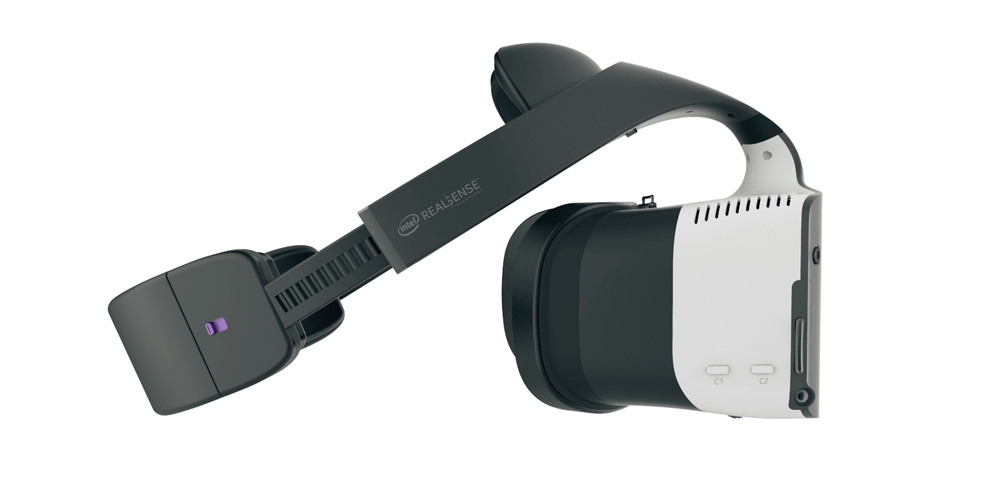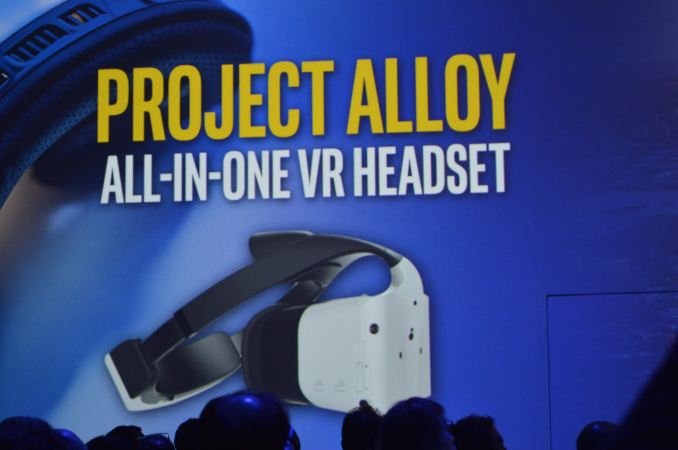The VR headset market is getting thicker by the month, with Intel now showing off a brand new version of the headset it revealed back in August 2016. The new VR headset is a standalone device that doesn’t require a PC or to be connected to a computing device or even a power source.

The new VR headset from Intel with RealSense™ technology will be licensed to third parties, according to CEO Brian Krzanich. The self-powered unit can render a pre-scanned environment in virtual reality, but it cannot scan the environment on its own. The pre-scan has to be uploaded to the VR headset first, but Intel did not say how that was being done.
This is something Intel calls “merged reality”, as opposed to virtual reality. In a virtual reality set up, the entire environment is created from virtual objects. There’s also augmented reality, which is a little closer to Intel’s concept for this particular headset, and blends virtual objects with the real-world environment. Microsoft has its own name for it – mixed reality.
The biggest challenge for Intel’s new VR headset is not about third parties manufacturing the units. The chipmaker may be able to swing deals with OEM companies to make the headset, but the real challenge is about content creation. Unless a considerable bank of applications are created that will work on this unit, it’s not going to be very attractive for consumers.
On the other hand, if Intel is able to allow integration with other VR platforms such as Daydream or Tango – both from Google – then it has a fighting chance of surviving in what is becoming an increasingly competitive consumer products space.
There’s already tough competition from the likes of Facebook-owned Oculus, Samsung with its Gear VR and HTC with the Vive, not to mention the high-end mixed reality and holographic device – Microsoft Hololens – from one of the world’s top technology companies.
In fact, some of the better-known brands of VR headsets, such as the Oculus Rift, HTC Vive and OSVR Razer already run on Intel’s chips, a validation that Intel has entrenched itself into alternate reality technologies.
Intel is also well-placed in the physical device connectivity space with its Thunderbolt™ 3 USB-C connector that is quickly becoming the recognized I/O standard for USB data transfer and charging.
Thanks for reading our work! Please bookmark 1redDrop.com to keep tabs on the hottest, most happening tech and business news from around the world. On Apple News, please favorite the 1redDrop channel to get us in your news feed.



